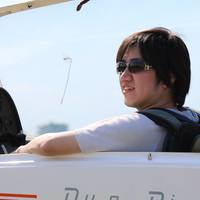Understanding Quantum Computers
About Course
Keio UniversityDescription
Get an introduction to the key concepts of quantum computing
In this course, we will discuss the motivation for building quantum computers, cover the important principles in quantum computing, and take a look at some of the important quantum computing algorithms.
We will finish with a brief look at quantum computing hardware and the budding quantum information technology industry.
Key concepts will be explained graphically, with minimal mathematics but some deep thinking required.
What topics will you cover?
- Waves and interference
- Quantum superposition and entanglement
- Computational complexity
- The quantum Fourier transform
- Shor’s algorithm for factoring large numbers
- Grover’s algorithm
- Quantum chemistry and machine learning
- Physical phenomena as quantum bits (qubits)
- Quantum computing hardware and architecture
- Quantum error correction
- The quantum information technology industry
Who will you learn with?

Rodney Van Meter
Rodney Van Meter studied at Caltech, USC, and Keio. He has been working on quantum computing since 2003. He is the author of the book “Quantum Networking” (Wiley-ISTE, 2014).

Takahiko Satoh
Takahiko Satoh studied at Keio and U.Tokyo. His research field is quantum computing, particularly quantum computer architecture and quantum network architecture.
Who developed the course?

Keio University
Keio University is Japan’s first modern institution of higher learning, and since 1858 has established itself as a leader in Japan through its continued commitment to education, research and medicine.
-
Established: 1858
What Will I Learn?
- Describe a few key applications of quantum computing
- Explain the role of quantum computing in the future and recognize the role of Moore’s Law in the future of computing
- Prepare for a mathematical course in quantum information concepts
- Explore the value proposition in available and forthcoming quantum information technology products
- Identify the importance of quantum superposition, entanglement and interference in quantum algorithms


